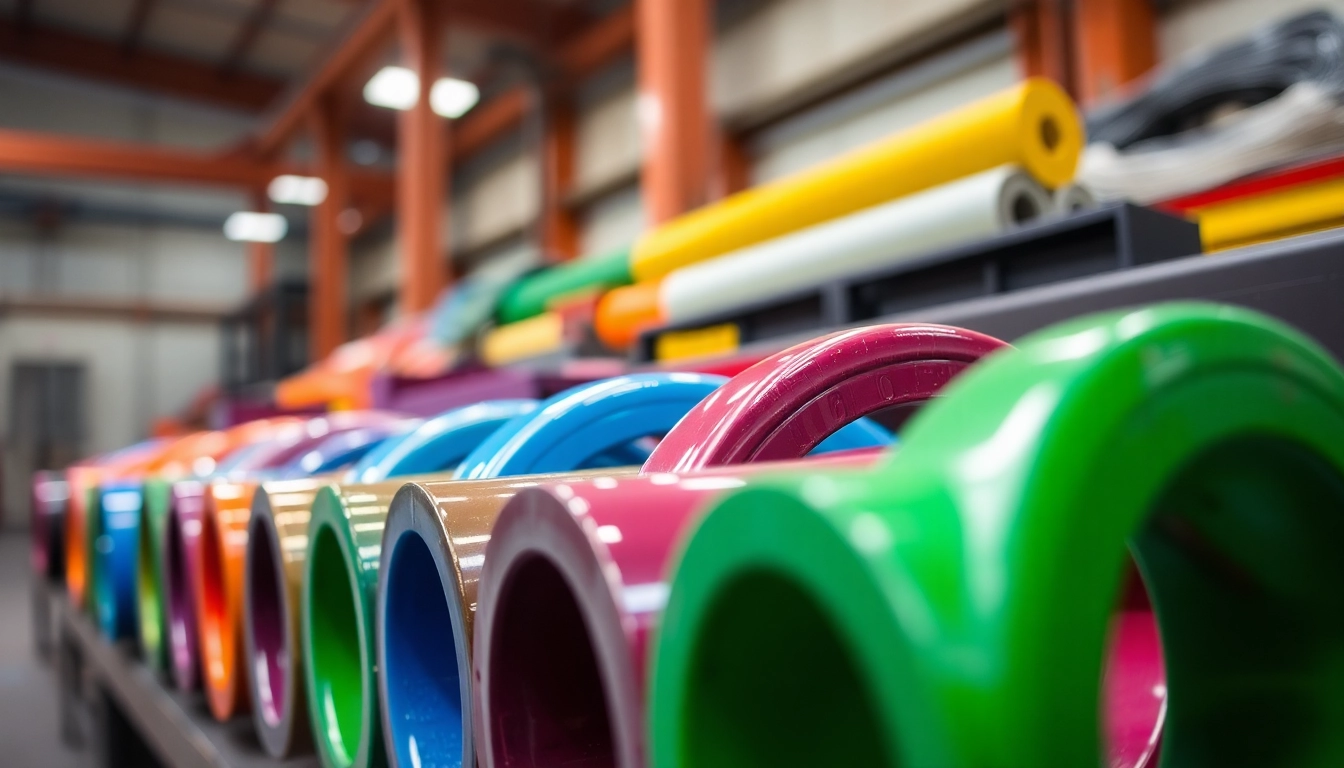Understanding Piping Stress Analysis
What is Piping Stress Analysis?
Piping stress analysis is a critical engineering discipline that evaluates and interprets the behavior of piping systems under various load conditions. In essence, it is a method that focuses on understanding how pipelines react to different types of forces, factors, and stresses induced by temperature changes, pressure fluctuations, environmental conditions, and earthquake movements. During this analytical process, engineers employ specialized software and techniques to assess pivotal attributes, including structural integrity, flexibility, and the overall durability of the piping network.
This analysis becomes especially crucial in industries where safety and efficiency are paramount, such as oil and gas, aerospace, chemical processing, and water treatment. A well-executed piping stress analysis company will consider all influencing factors to mitigate potential risks and design systems that can withstand operational demands over their intended lifespan.
Importance of Stress Analysis in Piping Systems
The significance of stress analysis in piping systems cannot be overstated. First and foremost, it ensures the safety and reliability of the infrastructure. Engineers need to ascertain that the piping systems can sufficiently handle the stresses caused by high pressures, temperature changes, and operational conditions without failure. Some of the pivotal reasons why this analysis is essential include:
- Prevention of Failures: By accurately assessing the stresses on piping systems, potential failures can be preempted, significantly reducing the risk of catastrophic incidents.
- Regulatory Compliance: Compliance with local and international regulations, such as ASME B31.3 or ASME B31.1, is required. Piping stress analysis ensures that systems are designed in accordance with these standards.
- Optimization of Design: The analysis evaluates alternative materials and configurations that can enhance the design, ensuring efficient use of resources while maintaining safety.
- Cost Efficiency: Identifying stress points early can mitigate costly repairs and downtime later on during the operational life of the pipeline.
- Longevity of Systems: A comprehensive stress analysis contributes to extending the life of piping systems by identifying potential renovation points and ensuring ongoing system integrity.
Common Challenges in Piping Stress Analysis
Despite its critical importance, piping stress analysis is fraught with challenges. Some common hurdles engineering teams face include:
- Complex Load Conditions: Piping systems often operate under dynamic conditions that may include seismic, wind, and other environmental loads, complicating analyses.
- Material Variability: The use of different materials, each having distinct thermal and mechanical properties, can lead to variations in performance analysis, necessitating meticulous attention to detail.
- Software Proficiency: The effectiveness of analysis is heavily reliant on the engineers’ proficiency in complex simulation software, which can vary dramatically across teams.
- Data Reliability: Insufficient or inaccurate data input can yield misleading results, leading to potentially hazardous decision-making.
- Understanding Code Requirements: Navigating the nuances of differing code requirements can be overwhelming, potentially leading to non-compliance with industry standards.
Key Features of a Reliable Piping Stress Analysis Company
Expertise and Experience
A reliable piping stress analysis company is characterized by its expertise and the breadth of experience held by its engineering professionals. Companies that excel in this field maintain teams of seasoned engineers with backgrounds in mechanical, civil, and chemical engineering, among others. These professionals should be well-versed not only in theoretical principles of mechanics and material science but also in practical applications related to fluid dynamics, thermal expansion, and piping codes.
Furthermore, experience in diverse industries enhances a firm’s capacity to manage a variety of projects, ranging from simple installations to complex, multi-dimensional systems. This breadth of experience informs their problem-solving abilities, enabling them to foresee potential challenges and devise effective solutions tailored to specific project requirements.
Technology and Tools Utilized
Today’s leading piping stress analysis firms employ cutting-edge technology to enhance their analysis capabilities. Notably, software tools like CAESAR II, AutoPIPE, and ANSYS are industry standards that allow for comprehensive analysis of piping systems under numerous conditions.
These tools enable engineers to model real-world conditions accurately, including thermal expansion, support conditions, and dynamic loading scenarios such as earthquake or wind forces. The adoption of advanced simulation tools also allows for iterative refining of designs based on initial findings, ultimately creating more reliable and efficient piping solutions.
Client-Centered Approach
A pivotal characteristic of an exemplary piping stress analysis company is its client-centered approach. This involves maintaining clear communication channels, being responsive to client needs, and adapting services based on specific project requirements. Firms that prioritize client collaboration often conduct thorough discussions about project scope, timelines, and budget expectations early in the engagement, ensuring alignment and mutual understanding.
Additionally, successful companies employ a feedback loop that encourages clients to provide insights post-project completion, allowing them to continually refine their methodologies and enhance customer satisfaction.
Best Practices for Piping Stress Analysis
Accurate Load Assessment
Accurate load assessments form the bedrock of effective piping stress analysis. Engineers must compile and evaluate all potential loads that may apply to a piping system, including:
- Dead Loads: The weight of the piping itself and any fixed attachments or supports.
- Live Loads: Variable loads, including pressure and temperature variations, that can impact the piping over time.
- Environmental Loads: Effects from environmental conditions (wind, snow, seismic activity) that can impose additional stresses on the piping.
Utilizing a multi-faceted load assessment strategy ensures that all potential influences are accounted for, leading to more secure and stable designs. Regularly updating these assessments based on the latest operational data and environmental trends is equally vital.
Material Selection and Consideration
The selection of appropriate materials for piping systems is another critical aspect of piping stress analysis. Different materials will respond differently under varying pressures and temperatures. Engineers must assess the properties of materials such as:
- Yield Strength: The maximum stress a material can endure without permanent deformation.
- Tensile Strength: The resistance of a material to breaking under tension.
- Corrosion Resistance: Assessment of how materials will interact with fluids, especially in chemical processing environments.
By meticulously selecting materials based on these criteria, engineers can greatly enhance the longevity and reliability of piping systems and minimize maintenance needs.
Compliance with Industry Standards
Compliance with relevant industry standards is non-negotiable in piping stress analysis. Adherence to guidelines established by organizations like the ASME (American Society of Mechanical Engineers) ensures that the designs meet safety and quality benchmarks essential in various industries. The different sections of ASME B31.1 and B31.3 highlight necessary considerations for power piping and process piping, respectively.
Moreover, staying informed of updates to these codes and regulations allows companies to maintain compliance and assure clients of their commitment to safety and quality assurance. Regular training and certification of engineers involved in stress analysis bolster a firm’s adherence to these industry standards.
Case Studies: Successful Piping Stress Analysis Projects
Case Study 1: Energy Sector Implementation
A leading energy company required a comprehensive pipe stress analysis for a new thermal oil heating system designed for a large oil sands facility. The project involved extensive calculations and simulations to assess operational temperatures that significantly exceeded standard conditions.
The piping stress analysis team utilized CAESAR II to model the entire piping network and simulate thermal expansion scenarios. By iterating the designs, they were able to identify potential failure points and redesign critical elements to mitigate stress-induced failures. The outcome was a robust and dynamic piping system capable of handling the anticipated operating pressures. Post-installation monitoring indicated that the system operated seamlessly without failures during initial trial runs, validating the analysis and design process.
Case Study 2: Chemical Processing Facility
In a chemical processing facility, the company faced issues of frequent piping failures leading to operational inefficiencies and significant downtime. Engaging a piping stress analysis firm yielded a custom assessment of the existing systems, which involved collecting real-time data on pressure fluctuations and material properties.
The analysis indicated that several piping sections were subjected to excessive stress due to improper support placement and outdated materials. After redesigning the system based on the analysis outcomes, selecting more suitable materials, and repositioning the support structures, the facility reported a remarkable reduction in failures, contributing to safer and more efficient operations.
Case Study 3: Water Treatment Solutions
A municipal water treatment plant sought to enhance its piping systems to improve water flow and reduce maintenance costs. Partnering with a piping stress analysis company, they performed a comprehensive assessment of their existing infrastructure, documenting load impacts and existing support conditions.
By employing advanced modeling techniques, engineers simulated various operational scenarios and identified critical stress points within the system. Line modifications were executed, incorporating additional support structures and material upgrades which ultimately led to improved flow rates and lowered maintenance intervention. Recent inspections revealed a significant increase in system reliability, and operational costs decreased by approximately 30% within the first year of implementation.
How to Choose the Right Piping Stress Analysis Company
Evaluating Company Profiles and Credentials
When selecting a piping stress analysis company, thorough evaluation of their credentials and profile is imperative. Potential clients should review the company’s portfolio, examining previous projects, industry certifications, and technical expertise demonstrated within team profiles. A well-regarded firm should have verifiable experience coupled with a strong educational background in relevant engineering disciplines.
A company that actively participates in industry conventions and holds association memberships also signifies credibility and commitment to their professional development.
Questions to Ask Your Potential Partner
Before finalizing a partnership, consider posing key questions to gauge alignment and capability. Important inquiries may include:
- What software tools does your team utilize for stress analysis, and how proficient is your team with these tools?
- Can you provide examples of past projects similar to mine, and what challenges did you face?
- How does your company ensure compliance with industry standards throughout the analysis process?
- What is your process for revision and validation of results obtained from stress analyses?
- How do you maintain a client-centric approach in managing the projects?
Understanding Cost vs. Value in Services
Finally, in assessing a piping stress analysis firm, understanding the balance of cost versus value is crucial. While it may be tempting to opt for the cheapest provider, comprehensive analysis demands investment in terms of skilled labor, advanced tools, and adherence to best practices. Rigorous, high-quality analysis can save immense costs in maintenance, legal liabilities, and downtime over time.
Evaluating the potential return on investment will help ensure that you select a partner capable of delivering thorough and accurate analysis for your piping systems, ultimately leading to safer and more efficient operations.



